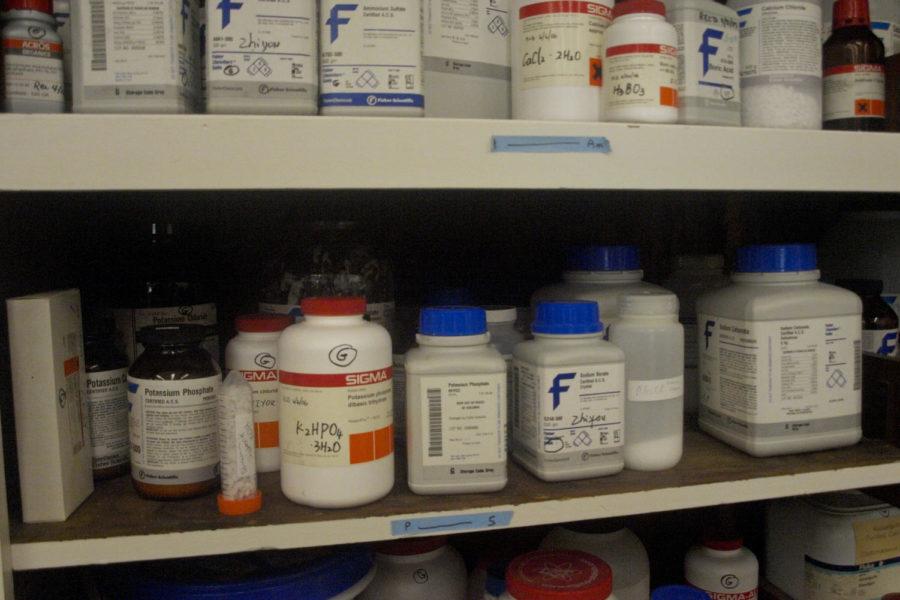OSHA updates require training for ISU employees
Tiffany Herring/Iowa State Daily
New OSHA standards will require a chemical training course called Laboratory Safety Core Concepts for employees of research labs.
October 24, 2013
Changes published by the Occupational Safety and Health Administration, as part of a new universal standard format, potentially will affect employees at Iowa State.
Richard McColley, an assistant manager and industrial hygienist with Iowa State’s department of environmental health and safety, said the changes that are part of the worldwide Globally Harmonized System mostly will change what information is included in labels, as well as create a standard format for standardized safety sheets.
McColley said all ISU employees who work with chemicals will have to be trained on the changes by Dec. 1.
“We’ve had a number of people take the course already,” McColley said.
He said the new information included on labels will help users to better understand the hazards associated with that chemical.
“What’s being added is the pictograms, the precautionary statements, and supplemental information, any other information relating to how you deal with exposures and injuries relating to that chemical,” McColley said.
McColley said that in the past, only a product identifier, signal word and hazard statements have been on the label.
McColley said the primary change with safety data sheets comes from a name change. He said that previously, the United States has referred to them as material safety data sheets.
The rest of the world calls them safety data sheets, so as a result they will also be known as safety data sheets in the United States.
He also said the information on the sheets will be standardized and easier for the user to understand.
“Previously, there was no standard format required by OSHA,” McColley said. “Now, when you want to look for first aid information, you will know that you always go to section four on the safety data sheet. Previous to this, that information could be in any number of locations on the material safety data sheet.”
McColley said the changes with the Harmonized System change existing regulation called the Hazard Communication Standard which was published by OSHA in 1986. The system is being instituted across the world in the hope of standardizing information about hazardous chemicals.
There are two courses that incorporate these changes. Both courses are online and will take roughly one hour each to complete.
He said one of the courses, the Worker’s Right to Know online training, is for nonlaboratory personnel such as janitors and maintenance personnel. The other course, Laboratory Safety Core Concepts is for individuals who work in research laboratories.
Shawn Nelson, program manager at Ames Laboratory, said he is excited about the changes.
“It’s going to be helpful for our international students and visitors, they’re already using the Global Harmonization System,” Nelson said. “This is a case where the United States is actually behind the international [world],”







